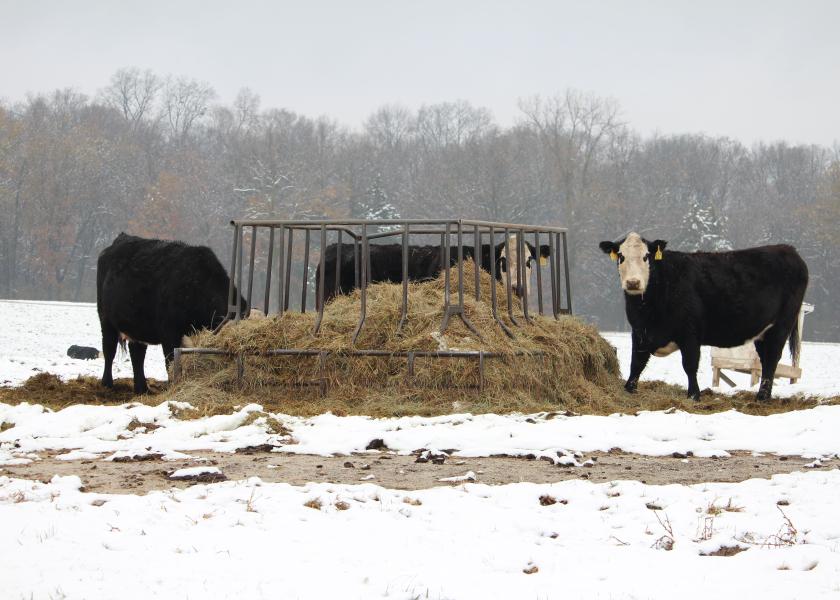Monitor Cow Condition During Weather Stress

Cold January temperatures followed by muddy conditions from melting snow has created special challenges for beef cattle producers, said Kansas State University beef extension specialist Justin Waggoner.
“We’re getting muddy, but at the same time we’ve got these cold temperatures, so it really starts to add up, if you will, in terms of the impact it can have on cattle,” he said.
Waggoner said monitoring the body condition of gestating cows during times of cold stress becomes critical for calving and rebreeding.
“I would encourage cow-calf producers to pay close attention to body condition score on cows, especially as we begin to get closer to calving,” he said. “The other side of that is we need to prepare ourselves that if we’re seeing some thin cows at calving, then we need to consider what that looks like in terms of the upcoming breeding season. Likely, it’s going to take longer for those cows to cycle back.”
Observing the weights of replacement heifers experiencing cold stress relative to target weights at breeding should also be monitored, according to Waggoner.
“We get this implication of cold stress and these heifers aren’t able to gain as much,” he said. “Take the opportunity to do a weight check on those heifers 45 to 60 days before the expected breeding season.”
Bulls require management during harsh winter weather as well, Waggoner said.
“We talk about the importance of bull management oftentimes in providing bedding for those bulls, but the other piece of that is we certainly want to encourage producers to do a semen test prior to turnout,” he said. “We’re more focused on the calves and the upcoming calving season, so it’s just really easy to overlook those bulls.”
Management of feeding sites is also important.
“We need to consider moving the location where we’re feeding those livestock. If we’re still feeding cows out on pasture, rolling hay, then we need to make sure that we’re minimizing the damage to a particular location, or we may need to do some clean-up of those long term feeding sites once conditions improve,” he said.
Concerning the growing and finishing sectors of the industry, poor pen maintenance and muddy conditions take a toll on the gain of fed cattle, Waggoner said.
“Hoof deep mud can start to impact cattle performance and reduce it by as much as 15%,” he said.
Additionally, backgrounding and growing operations may need to account for reduced animal performance in their marketing plans, Waggoner said.
“If we’re in a system where we’d like to market eight-weight (800 pound) calves in March, and if we’re colder and wet, there’s some likelihood that those calves are going to be lighter,” he said. “So re-evaluating the performance of those calves relative to their optimum marketing date certainly will be beneficial to producers.”







